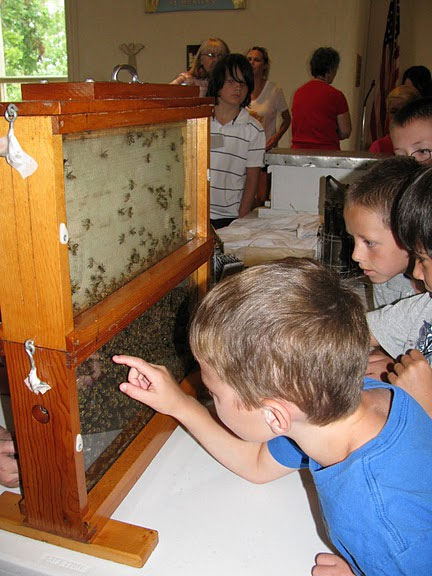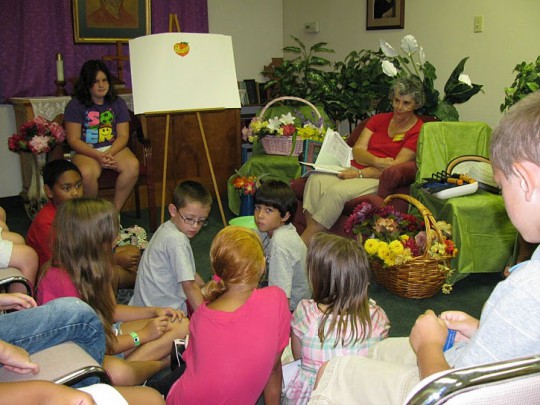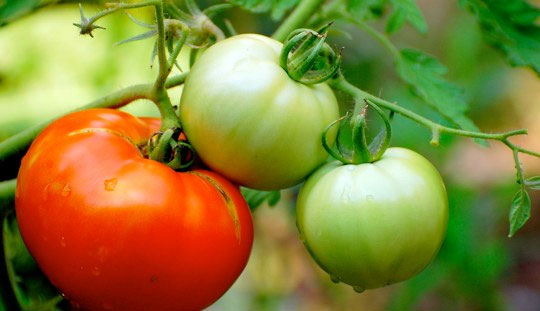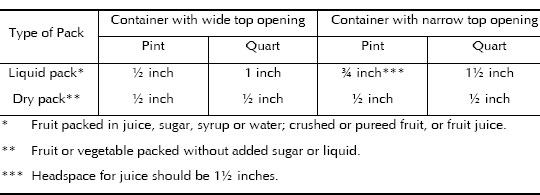Birth: Ruby Cheyenne Lovely
July 17, 2011
Michael and Caitlin Lovely of Bratt are proud to announce the birth of their daughter, Ruby Cheyenne Lovely.
Ruby came into the world on July 6, 2011 at 8:18 p.m. She weighed 6 pounds, 6 ounces.
July Gardening Tips
July 16, 2011
 The heat, humidity and frequent rains of July are great for tropical plants. Gardeners, however, take a bit of a beating. Remember to keep the sunscreen, insect repellant and iced tea handy as you venture out into your garden to perform some needed summer maintenance.
The heat, humidity and frequent rains of July are great for tropical plants. Gardeners, however, take a bit of a beating. Remember to keep the sunscreen, insect repellant and iced tea handy as you venture out into your garden to perform some needed summer maintenance.
A midsummer application of fertilizer is usually required, especially on annual flowers, lawns, shrub beds and vegetable gardens. This is a supplemental application, so don’t overdo it. A 15-0-15 slow-release fertilizer is a good general purpose landscape fertilizer for most plants.
Major pruning jobs should have been done earlier, but there is still some maintenance pruning that should be done. Deadhead, or clip old flowers, from summer flowering shrubs as soon as they fade to help insure an extended season of bloom. Crape myrtles, hibiscus, hydrangeas and althea are examples of shrubs that will bloom repeatedly if light, selective pruning is done.
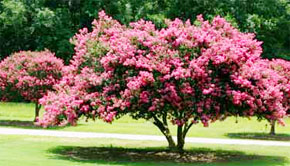 Flowering annuals also respond well to deadheading. Snip off old flowers and flower spikes before they have an opportunity to form seed. Allowing annual flowers to set seed can shorten their blooming season considerably.
Flowering annuals also respond well to deadheading. Snip off old flowers and flower spikes before they have an opportunity to form seed. Allowing annual flowers to set seed can shorten their blooming season considerably.
Inspect your lawn and shrub plantings frequently in order to identify pest problems as early as possible. The most severe damage from pest insects normally begins in July. Be on the lookout for chinch bugs in St. Augustine grass; spittlebugs in centipede grass; sod webworm in all lawns-especially new ones; lacebug and caterpillars on azaleas; whiteflies on gardenia and spider mites on lots of different types of shrubs.
Sod webworms often attack lawns in the summer. They eat the grass blades producing areas that look as if they have been mowed too short. Close inspection will reveal that the blades have not been cleanly cut as with a mower blade but have been chewed along their edges and tips. These caterpillars feed at night and rest during the day down among the runners and in the thatch.
 Once an insect pest is found, evaluate the damage and determine if control is necessary. If it is, choose the least toxic option. If only a few caterpillars are found, hand picking might be the choice. Aphids and spider mites can often be controlled by spraying with an insecticidal soap solution. Chemical insecticides are sometimes required. Before choosing one be sure that the insect pest has been properly identified and that the insecticide is labeled for that purpose For vegetable gardeners that have problems with nematodes, soil borne diseases and extensive weed problems, July is a great time to try soil solarization.
Once an insect pest is found, evaluate the damage and determine if control is necessary. If it is, choose the least toxic option. If only a few caterpillars are found, hand picking might be the choice. Aphids and spider mites can often be controlled by spraying with an insecticidal soap solution. Chemical insecticides are sometimes required. Before choosing one be sure that the insect pest has been properly identified and that the insecticide is labeled for that purpose For vegetable gardeners that have problems with nematodes, soil borne diseases and extensive weed problems, July is a great time to try soil solarization.
Prepare the soil as you normally would for a vegetable garden including adding organic matter. Moisten the area and cover with clear plastic, not black plastic. Clear plastic will produce the highest temperatures. Be sure to weigh down the edges of the plastic so that it doesn’t blow up. Allow the soil to bake in the sun for four to six weeks. The sun will raise the soil temperature high enough to kill many soil borne problems.
Tip of the Week: The nice thing about tomatoes is that you have the option of harvesting when the fruit is green if needed. Tomatoes will ripen indoors at room temperature. To ensure even ripening, place the tomato with the stem up. The ideal time to harvest tomatoes is when they are fully colored but still firm.
In general, it is best to harvest vegetables early in the mornings while the moisture content is higher. The overall quality will quickly diminish as vegetables are exposed to hotter temperatures later in the day.
For more information, contact Theresa Friday at 850-623-3868 or email tlfriday@ufl.edu. Friday is the Residential Horticulture Extension Agent for Santa Rosa County.
The Book Closes On ‘Harry Potter’ Film Series
July 15, 2011
The final Harry Potter film hit the big screen at 12:01 this morning, with throngs of fans lining up at theaters along the Gulf Coast anxiously anticipating the moment. “Harry Potter and the Deathly Hallows: Part 2″ is the end for the Harry Potter series, 10 years after the first film and 14 years after the book release.
Did you see the movie? Tell us about it in the comments below, and email any photos you have to news@northescambia.com.
Pictured above left: Sisters Lydia (left) and Haylee Weaver of Molino wait to see the final Harry Potter late Thursday night at the Ridge Cinema 8 in Pace. Pictured above right: Northview High Senior Taylor Rigby (left) and junior Ashley Cunningham pose with Voldemort at the Rave on Bayou Boulevard in Pensacola. Submitted photos for NorthEscambia.com, click to enlarge.
Photos: St. Monica’s Vacation Bible School
July 15, 2011
Son Harvest Country Fair Vacation Bible School ended Friday at St. Monica’s Episcopal Church in Cantonment. During the week, the children enjoyed a variety of activities, crafts, dressed as scarecrows and even learned about bees and pollination from Roy Smith of R&J Apiaries.
For a photo gallery, click here.
Pictured above and below: VBS at St. Monica’s Episcopal Church in Molino. Submitted photos for NorthEscambia.com, click to enlarge..
Do you have new or photos you would like to share from your church? Email news@northescambia.com
Local Boy With Cystic Fibrosis Gets To Be A Pilot For A Day
July 14, 2011
 Like many 12-year olds, Patton Goetter of Christian Home wants to be a military pilot, a “dream come true”, he says.
Like many 12-year olds, Patton Goetter of Christian Home wants to be a military pilot, a “dream come true”, he says.
But there’s a huge obstacle standing in his way — cystic fibrosis, an inherited disease that affects the lungs and digestive tract. It’s a relatively rare condition that claimed the life of Patton’s older brother Tyler about 10 years ago.
Patton had the chance this week, thanks to Naval Air Station Whiting Field and Sacred Heart Hospital, to be a “pilot for a day”.
“I got some badges for my shirt and stuff, and I got my name tag, and I got boots and a whole suit and a helmet – an awesome helmet. It’s just been really cool,” Patton. He had the chance to climb into the cockpit of a training aircraft, take a helicopter simulator for a high tech spin and use night vision goggles.
Patton’s case of cystic fibrosis is not as severe as his brothers, and mom Abby Goetter says she hopes that a new drug on the horizon will be a cure. In the meantime, she’s not going to hold her son back.
“I’m not going to say he can’t do anything. I’m not going to set any limits,” Abby Goetter said.
For Patton — who will be a fifth grader this year at Byrneville Elementary School — the sky’s the limit despite cystic fibrosis.
“I can do all things through Christ who strengthens me,” Patton Goetter said.
WALA FOX 10 contributed to this report. The FOX 10 video is below.
Pictured top: Patton Goetter gets a hug from his mother Abby during his “pilot for a day” experience at Naval Air Station Whiting Field. Pictured inset. Patton Goetter. Images courtesy WALA FOX 10 for NorthEscambia.com, click to enlarge.
Highland VBS Takes Kids On Big Apple Adventure In Molino
July 13, 2011
 Big Apple Adventure Vacation Bible School is underway this week at Highland Baptist Church on Highway 95A in Molino.
Big Apple Adventure Vacation Bible School is underway this week at Highland Baptist Church on Highway 95A in Molino.
The VBS, for ages three through completion of fifth grade continues each evening from 5:30 until 8:30 through Friday. There will also be a Family Night “Pizza In The Park” Sunday at 5 p.m.
By Sunday night, either Pastor Brian Calhoun or his wife Sara will be walking around with pink or purple hair. There is a friendly little competition between the boys and girls at Highland’s VBS to make the largest offering to the Children’s Malnutrition Center of San Juan, Guatemala, via the Florida Baptist Children’s Homes. If the girls win, the pastor’s hair will be purple on Sunday; if the boys win, the pastor’s wife’s hair will be pink.
Almost 250 took part in the first night of the VBS at Highland Baptist Church.
For more photos from the Highland Baptist Church VBS, click here.
Pictured above and below: VBS at Highland Baptist Church in Molino. Submitted photos for NorthEscambia.com, click to enlarge..
Do you have new or photos you would like to share from your church? Email news@northescambia.com
Featured Recipe: Pork Blade Steak Piccata
July 10, 2011
Pork Blade Steak Piccata, from Food Network star Guy Fieri’s new book “Guy Fieri Food” is an off-the-hook take on a classic, and it’s sure to light your creative fires.
Pork Blade Steak Piccata
Yield: 4 to 6 servings
4 1-pound pork blade steaks
1 tablespoon lemon juice, freshly squeezed
1 tablespoon capers, drained
1 tablespoon flat-leaf parsley, chopped
Marinade:
1⁄4 cup garlic cloves, smashed (about 12 cloves)
3 tablespoons capers, drained
1⁄2 cup white wine
1 1⁄2 tablespoons Dijon mustard
1 teaspoon kosher salt
2 teaspoons black pepper, freshly cracked
1 1⁄2 tablespoons lemon zest, grated
3 tablespoons lemon juice, freshly squeezed
 In medium bowl, combine all marinade ingredients and stir until fully incorporated. Add blade steaks, cover and marinate for 30 minutes (or up to 3 hours) at room temperature.
In medium bowl, combine all marinade ingredients and stir until fully incorporated. Add blade steaks, cover and marinate for 30 minutes (or up to 3 hours) at room temperature.
Preheat grill to high.
Remove steaks from marinade, brushing off any large pieces. Bring marinade to a boil in a saucepan for 3 to 4 minutes, and set aside to baste while you grill.
Grill steaks while basting with reserved marinade. Remove from grill when well marked on both sides, about 3 to 5 minutes per side. Let rest 5 minutes.
To serve, slice and season with the salt, pepper, lemon juice, capers and parsley.
Weekend Gardening: Flowering Plants Require Summer Care
July 9, 2011
High temperatures can be stressful on our colorful annual and perennial plants causing many to diminish in vigor and beauty. Even though it’s hot outside, take the time to take care of your flowering plants. Good maintenance includes regular fertilization, watering, pruning and weeding.
 Many beds deteriorate simply because the flowering plants are starving. Our typical sandy soils don’t have the ability to store large amounts of some nutrients, especially nitrogen and potassium. After four to six weeks of waterings, most of these two nutrients have been depleted.
Many beds deteriorate simply because the flowering plants are starving. Our typical sandy soils don’t have the ability to store large amounts of some nutrients, especially nitrogen and potassium. After four to six weeks of waterings, most of these two nutrients have been depleted.
Plants usually grow much better with a continuous nutrient supply. Controlled-release fertilizers like Osmocote, Nutricote, Dynamite and others tend to be more costly, but the nutrients in them are slowly and steadily delivered to the plants over an extended period of several months. If you aren’t using controlled release fertilizers, then monthly applications of a granular fertilizer may be necessary.
Established beds should be watered on an “as needed” basis. Wilting will reduce flowering on many plants and should not be allowed to happen. The frequency of irrigation will depend on your soil type, exposure to sunlight, the plant species and the temperature. While we tend not to recommend daily watering, some annuals
growing in full sun during the summer may require daily watering.
 Always water during the early morning hours, rather than in the afternoon and evenings. This helps to reduce the incidence of flower, stem and leaf diseases. Avoid overhead watering if possible. Delivering watering to the roots through a microirrigation system, for example, is a preferred method.
Always water during the early morning hours, rather than in the afternoon and evenings. This helps to reduce the incidence of flower, stem and leaf diseases. Avoid overhead watering if possible. Delivering watering to the roots through a microirrigation system, for example, is a preferred method.
Good pruning practices can also help to keep flower beds vigorous. Many gardeners use the term “deadheading” to refer to the removal of old flowers as soon as they begin to deteriorate.
The goal of many flowering annuals and perennials is to reproduce themselves. Once this has been accomplished through seed production, plants change physiologically. Often the growth rate and flowering for the remainder of the season ceases or is greatly reduced.
Deadheading prevents the plants from producing seed and shutting down. Once old flowers are removed, the plants grow again in order to flower. This process can continue throughout the summer with well adapted flowering annuals and perennials.
The procedure is simple. Wait until flower spikes or individual flowers start to decline and then pinch or prune off the spent blooms. Enjoy the flowers during their peak, but don’t wait too long to deadhead. Once seed set occurs, the depletion of the plant’s stored energy begins.
Leave as much foliage on the plants as possible when deadheading unless they have become extremely tall and unruly. In this case, they can be cut back by one-third without serious damage.
 Some gardeners establish a routine of deadheading. After each flush of bloom has faded, plants are cut back to remove old flowers and fertilized to encourage new growth. This practice can stimulate some flowering annuals and perennials to produce three or four flushes of growth and continued flowering throughout the spring
Some gardeners establish a routine of deadheading. After each flush of bloom has faded, plants are cut back to remove old flowers and fertilized to encourage new growth. This practice can stimulate some flowering annuals and perennials to produce three or four flushes of growth and continued flowering throughout the spring
and summer.
Weeds can become very competitive in summer flowers, and in most cases hand weeding is required. Though there are a few herbicides that can help, extreme care must be taken in the selection and use of these products during the hot weather.
Evaluate all flower beds before beginning a summer maintenance program, making sure that you are expending efforts on truly warm season plants. Some, such as snapdragons, dianthus, carnations and pansies are cool season plants and no amount of care will help them to overcome summer temperatures. On the other hand, zinnias, marigolds, salvia and the tropical perennials will return your efforts many times over.
Molino, Century On The Tonight Show With Jay Leno Thanks To “Genius” Criminal
July 8, 2011
Both Century and Molino were mentioned on The Tonight Show with Jay Leno Thursday night, thanks to a “genius” criminal.
During Leno’s “Police Blotter” segment in which funny newspaper stories about criminals are featured, Leno presented a September 2004 newspaper story about a police chase that ended in Nokomis.
 “Another genius…tree cutter faces several charges after leading deputies on chase…a Pensacola tree cutter led deputies…10 mile chase from Molino to near Century…told deputies he was trying to smoke all $500 worth of his crack cocaine before he got pulled over,” Leno said, paraphrasing the article.
“Another genius…tree cutter faces several charges after leading deputies on chase…a Pensacola tree cutter led deputies…10 mile chase from Molino to near Century…told deputies he was trying to smoke all $500 worth of his crack cocaine before he got pulled over,” Leno said, paraphrasing the article.
“That’s very clever, you want to smoke as much crack…” Leno joked.
(The video is at the bottom of this page. After an advertisement, fast foward to about 2:23 to see the Molino/Century story.)
NorthEscambia.com obtained the September 29, 2004, Escambia County Sheriff’s Office incident report, and here’s what the report states happened:
John Wesley Montgomery, then 32, was arrested following a chase. After receiving a call on reckless vehicle, Deputy Michael Mandell located Montgomery northbound on Highway 97 and noticed that he would lean across his vehicle and disappear below the dash. The deputy activated his blue lights, but Montgomery would not stop and continued north on Highway 97.
“Montgomery’s vehicle began swerving and he made agitated arm waving motions and even appeared to be smoking a crack pipe,” the deputy wrote in his report.
Several other deputies joined in the chase and the Sheriff’s Office helicopter was called. Montgomery eventually crashed through a fence in the 7700 block of Nokomis Road and fled on foot. Montgomery — who was employed as a tree cutter — was arrested as he tried to climb a tree in a field.
Montgomery told deputies, according to the Sheriff’s Office report, that “he was driving crazy in the north area when he noticed some white guy in truck behind him. He became paranoid because he thought the vehicle was following him.”
“He stated at the time he tried to smoke the rest of his cocaine,” the report states.
In 2008, Montgomery was found guilty of fleeing and eluding law enforcement and aggravated assault on an officer and sentenced as a habitual offender to a mandatory three years in state prison. He is now in federal prison on unrelated charges.
Images courtesy NBC and The Tonight Show With Jay Leno.
Beauty Of Tomatoes: Enjoy Them Now, Preserve Extras For Later
July 8, 2011
The beauty of tomatoes this time of year is that they are red, and juicy, and that there are so many of them. If you grow your own, you probably think you have more than you can ever use. If you buy them at the local farmer’s market, you have an endless variety to choose from.
No matter how many tomatoes you have this summer, there are many different ways to use them. Summer’s tomatoes are delightful right off the backyard grill, or tossed with vinegar, oil and basil, or stirred into a primavera over pasta, or simply sliced and served cold.
You may want to consider preserving some of the summer’s bounty. Tomatoes retain many of their best qualities when preserved for use when the garden is just a memory.
Whether you freeze, can, or dehydrate tomatoes, your success will depend on the quality and freshness of the vegetable. It is best to process tomatoes as soon as possible after harvesting. Always discard underripe or too-mature tomatoes.
Dried tomatoes are delicious when rehydrated and added to pasta dishes, salads, or stirfry. They can be stored in any food-safe container that protects them from air and moisture. Home canning jars make excellent storage containers because they can be kept tightly closed, and they provide the added convenience of a see-through container. Dried tomatoes don’t have to be refrigerated if they are properly contained. Sun-dried tomatoes can add distinctive flavors to dishes.
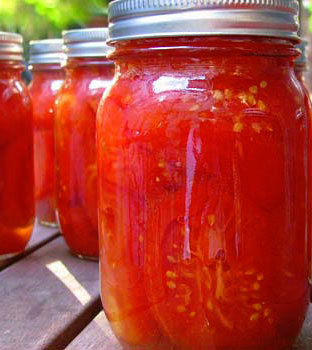 Frozen tomatoes retain their flavor, but lose some of their texture in the freezing process. They are an excellent choice to use for sauces or in stews and casseroles. Wash, core, and cut tomatoes, then cook them until soft. Cool, package, and freeze for later use. Canning tomatoes is one of the best ways to preserve their flavor and nutritional value. Select tomato varieties with thick flesh and fewer seeds. Use only quality tomatoes with no cracks, fungus growths, bruises or decayed spots.
Frozen tomatoes retain their flavor, but lose some of their texture in the freezing process. They are an excellent choice to use for sauces or in stews and casseroles. Wash, core, and cut tomatoes, then cook them until soft. Cool, package, and freeze for later use. Canning tomatoes is one of the best ways to preserve their flavor and nutritional value. Select tomato varieties with thick flesh and fewer seeds. Use only quality tomatoes with no cracks, fungus growths, bruises or decayed spots.
The canning process requires several steps. Washed tomatoes are first scalded, then cored, peeled and left whole, or cut into pieces. They are then boiled in just enough water to cover tomatoes, five to ten minutes. Pack into heated jars, adding citrus acid and seal with a vacuum cap. The canned tomatoes must then be processed in a boiling-water canner or pressure canner. This destroys micro-organisms that can spoil the tomatoes.
Citric acid is added to tomato recipes developed for safe processing in a boiling water canner. The citric acid is added to ensure the proper ph level for processing.
Many home canners “put up” barbecue sauce, salsa, spaghetti sauce, and tangy ketchup, to name just a few preservable foods using tomatoes.
Today, there are more than 500 varieties of tomatoes and other fruits and vegetables from all over the world available in the United States. Each one offers its own distinctive flavor, texture, and nutritional value. With all these options, preserving the fresh fruits and vegetables of summer is easy, and best of all, it captures the essence of the season for months to come.
Selecting, Preparing, and Canning Tomatoes
Select only disease-free, preferably vineripened, firm fruit for canning. Caution: Do not can tomatoes from dead or frostkilled vines. Green tomatoes are more acidic than ripened fruit and can be canned safely with any of the following recommendations.
Acidification: To ensure safe acidity in whole, crushed, or juiced tomatoes, add two tablespoons of bottled lemon juice or ½ teaspoon of citric acid per quart of tomatoes. For pints, use one tablespoon bottled lemon juice or ¼ teaspoon citric acid. Acid can be added directly to the jars before filling with product. Add sugar to offset acid taste, if desired. Four tablespoons of a 5% acidity vinegar per quart may be used instead of lemon juice or citric acid. However, vinegar may cause undesirable flavor changes.
Recommendation: Use of a pressure canner will result in higher quality and more nutritious canned tomato products. If your pressure canner cannot be operated above 15 PSI, select a process time at a lower pressure.
Sun-Dried Tomatoes
Wash and stem ripened tomatoes. Slice horizontally, about ¼-inch thick. Salt on both sides and let sit for 30 minutes. Rinse. Lay on foil-covered baking sheets. Cover lightly with cheesecloth. Place in sun for several hours, turning occasionally until desired dryness is achieved. Store in jars in a cool pantry.
Intensely flavorful, dried tomatoes add snap to salads and breads. Also can be moistened to make sandwiches.
Freezing Tomatoes
Select firm, ripe tomatoes with deep red color.
Raw
Wash and dip in boiling water for 30 seconds to loosen skins. Core and peel. Freeze whole or in pieces. Pack into containers, leaving 1-inch headspace. Seal and freeze. Use only for cooking or seasoning since tomatoes will not be solid when thawed.
Juice
Wash, sort and trim firm, vine-ripened tomatoes. Cut in quarters or eights. Simmer 5 to 10 minutes. Press through a sieve. If desired, season with 1 teaspoon salt to each quart of juice. Pour into containers, leaving headspace according to Table 1 (bottom of page). Seal and freeze.
Stewed
Remove stem ends, peel and quarter ripe tomatoes. Cover and cook until tender (10 to 20 minutes). Place pan containing tomatoes in cold water to cool. Pack into containers, leaving headspace according to Table 1 (bottom of page). Seal and freeze.
Table 1. Headspace to allow between packed food and closure.
For more information contact Dorothy C. Lee, Escambia County Extension Agent, dclee@ufl.edu , or (850) 475-5230.




